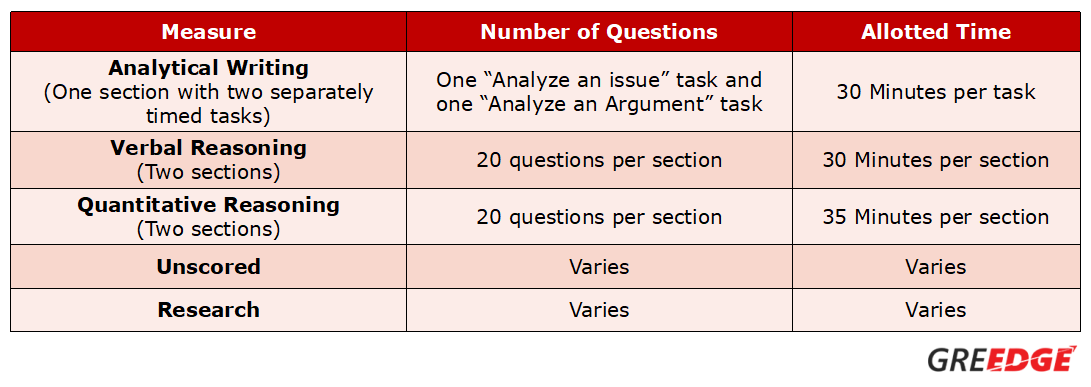GRE Exam Dates: Find the Best GRE Date for You
The ETS (Educational Testing Services) conducts the Graduate Record Examination (GRE) throughout the year for students and professionals aspiring to pursue higher studies abroad. The GRE exam is a common platform for test takers applying for Master’s or Ph.D. coming from different backgrounds. Hence, the test is not a measure of their individual technical knowledge but rather of skills, based on their fundamental language and numerical reasoning abilities.
The ETS offers the GRE in two formats:
- Computer-delivered GRE General Test
- Paper-delivered GRE General Test
Computer-delivered GRE General Test:
The computer-based tests are conducted throughout the year at Prometric test centers and sometimes even outside the Prometric network. You can take the test up to five times in a year, with a gap of at least 21 days in between attempts. Keep in mind, though, that it might be very difficult to get an appointment at your nearest GRE testing center during the peak application season, which is mostly the second half of the year, and it’s always a smart decision to book your slot well in advance. It takes around 10 to 15 days to send your test reports to universities and for the universities to process them, so select your test date accordingly.
Click here to locate your nearest test-center and check the seat availability
The overall duration of the computer-based test is 03:45 hrs, and there are 6 sections to be attempted. The time-distribution is as follows:
The GRE Exam General test offers test-takers some very handy features, such as:
- The freedom to go forward and backward and skip or flag questions for review (so that you can revisit them later if you have time)
- Preview and Review options in each section
- A Mark and Review option within a section
- An on-screen calculator, which you can use on the Quantitative part of the test and a timer so that you don’t lose track of how much time you have left.
Note: – You can even cancel or change your test date up to 4 days in advance in case of an emergency, and reschedule your test on any other date according to your convenience. The fee to change your test date is US$50 and the new date should be within one year of the original test date. You cannot switch from the GRE General test to the GRE subject test or vice-versa.
You can register and pay for the Computer-delivered GRE General test online from the ETS’s website or over the phone. Click here to explore the registration process for yourself
Paper-delivered GRE General test:
The Paper-delivered GRE General test is only available in those areas of the world where the computer-delivered test is not available. Since in India the computer-delivered GRE General test is available, the PDT is not available.
What is GRE Score Select Option and How is it beneficial?:
Your GRE exam score is valid for five years from the date of taking the test, and you can take the test for any number of times in between. The GRE Score select option gives you the flexibility of sending the highest score of yours to the universities you wish to apply to.
For instance, if you take the test in February, and score a 321 and you take it again the following month score a 315, you can take the benefit of the GRE’s Score Select option to send your higher score of 321 to the graduate schools you want to apply to.
Note – There are two different types of scores for the Computer-delivered GRE Exam – one is the score you get right after your test gets over, called the ‘Raw score’, and the other is the official score which is sent to you after 4 to 5 weeks. You can send the raw score (which is the number of questions you’ve answered correctly) to four graduate schools without any extra fee. You can also send your test score after the test but for every additional scorecard, you have to pay an additional fee of $27.
How to make a perfect GRE timeline and how to prepare for it?:
In order to make a perfect GRE timeline, let’s work backward. Say, a person named ‘A’ wants to apply for the fall intake. It should be noted that most universities in the U.S. have their deadlines in December and January, with their early applications deadlines being in October and November.
So, ‘A’ has to apply to his dream universities latest by December. Ideally, he has to finalize his documents and ready his application for the universities by November, and in order to do that he has to start writing SOP three months prior to that, i.e., August. He has to write the SOP according to the specific requirements of the universities and courses he is applying for, which means that he should have completed the university shortlisting process by July. According to an ideal timeline, he should have taken his GRE exam by June and for that, he should have started his preparation 3-4 months in advance. That is, he should have started his GRE preparation from February or March.
So, it could be said that a perfect admissions timeline would be a span of 9 months that is from February to November, for students applying for the fall intake.
1. Analyze where you stand
In order to efficiently prepare for the test, your most important task would be to analyze where you stand. And to do this, a well-structured online GRE mock/sample test can work wonders. Try the ‘GRE Score Predictor’ for free now and get an accurate idea of how much you’d score on the GRE exam if you took it today, along with a personalized evaluation of your performance on the test.
To know where your current level of preparation stands, try this free GRE score predictor tool. Not only will you get an accurate estimation of your GRE score, but you’ll also get feedback of where exactly you need to work on!
2. Target score
After getting your score, you’ll know what your strengths and weaknesses are. The next step is to set up a target score for yourself, and for doing this, you have to keep in mind the following factors:
- The threshold/average score of admitted students at your dream universities.
- The duration of your study or preparation time.
- Your current level of proficiency in the verbal and quants sections.
- Your target scores in the Verbal and Quants sections.
- Your schedule & time-limitations – for example, if you’re a student, intern or working professional.
- Your other commitments.
3. Success Mantra
Start Early – Learn Longer – Finish Early: If you’re a third or final-year undergraduate student or a working professional, then the right time to take the GRE is as soon as possible, while also giving yourself enough time to prepare. Starting early lets you devote more time to your preparation and towards building your fundamentals – you can find your weaknesses and work on them to achieve mastery, and also take as many mock tests as possible and get rid of exam phobia.
If you start early, you will also have more time in hand for writing your SOPs, getting your LORs, shortlisting your Universities, meeting experts and other important work. You can apply for financial aid and scholarships on time and not rush before the deadlines.
Moreover, in case you are late to start your preparation, take the test late, and do not reach your target score, then you might want to retake it. However, do keep in mind that you have to wait at least 21 days between 2 successive attempts, and you risk missing out on university application deadlines.
Download our eBOOK on “What Exactly is a Good GRE Score?“
Preparing for a high score on the GRE exam is something that should be done in a few months and not in a few weeks. Most students who miss out on their target scores start late and devote less time to their preparation, practice and doubt-solving sessions, often over-estimating their skills and abilities. The GRE test fee amounts to $205, so you should try and ensure that you’re well-equipped to hit a high score on your very first attempt, to avoid having to take it again!
4. Practice More!
Take more mock tests and get used to the test pattern. The GRE exam is an adaptive test, which means that your performance on the first section determines the difficulty level of the subsequent sections. In order to get a good score, it’s important that you familiarize yourself with the test pattern and practice solving full-length question papers of the same difficulty level and duration as that of the real test. Take section-wise practice tests separately weekly (to assess your performance on each section), and attempt the full-length mock test after you’re confident of performing on each individual section.
Click here to take the GRE Quiz Now!
5. Being realistic – Managing your other Commitments
Your timeline should also account for other commitments of yours like your college studies, jobs, relationships and leisure activities (whichever applicable) to ensure that it’s realistic. Final year undergraduate students have to focus on their project work apart even from preparing for the GRE exam as it’s something the universities look out for when assessing your profile. Third-year undergraduate students on the other hand also have to focus on maintaining a decent GPA, internships, and on developing other skills.
Click Here to evaluate your admissions awareness in under 10 minutes
Do feel free to leave your doubts in the comments, and we’ll be happy to help you out! All the best!










